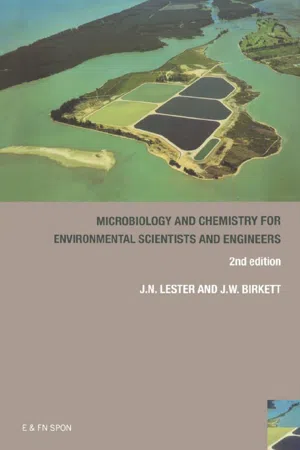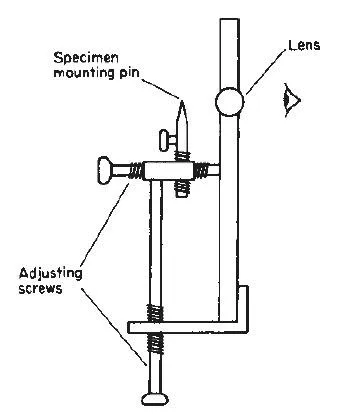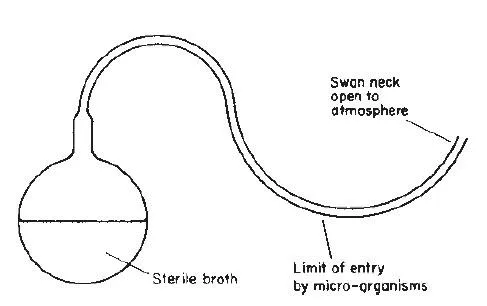
eBook - ePub
Microbiology and Chemistry for Environmental Scientists and Engineers
Jason Birkett, John Lester
This is a test
- 400 pages
- English
- ePUB (mobile friendly)
- Available on iOS & Android
eBook - ePub
Microbiology and Chemistry for Environmental Scientists and Engineers
Jason Birkett, John Lester
Book details
Book preview
Table of contents
Citations
About This Book
Biological and chemical processes play a key role in the treatment of domestic wastewater and are becoming increasingly important in tackling the problems caused by industrial wastes. The first edition of this popular text focused on microbial systems and wastewater processes that are implemented in a treatment plant. While maintaining this approac
Frequently asked questions
How do I cancel my subscription?
Can/how do I download books?
At the moment all of our mobile-responsive ePub books are available to download via the app. Most of our PDFs are also available to download and we're working on making the final remaining ones downloadable now. Learn more here.
What is the difference between the pricing plans?
Both plans give you full access to the library and all of Perlego’s features. The only differences are the price and subscription period: With the annual plan you’ll save around 30% compared to 12 months on the monthly plan.
What is Perlego?
We are an online textbook subscription service, where you can get access to an entire online library for less than the price of a single book per month. With over 1 million books across 1000+ topics, we’ve got you covered! Learn more here.
Do you support text-to-speech?
Look out for the read-aloud symbol on your next book to see if you can listen to it. The read-aloud tool reads text aloud for you, highlighting the text as it is being read. You can pause it, speed it up and slow it down. Learn more here.
Is Microbiology and Chemistry for Environmental Scientists and Engineers an online PDF/ePUB?
Yes, you can access Microbiology and Chemistry for Environmental Scientists and Engineers by Jason Birkett, John Lester in PDF and/or ePUB format, as well as other popular books in Biological Sciences & Environmental Science. We have over one million books available in our catalogue for you to explore.
Information
Chapter 1
Introduction to microbiology
1.1 Origins of microbiology
The existence of the microbial world was first recognized by Antonie van Leeuwenhoek (1632–1723), a Dutch merchant working in the town of Delft. An essential prerequisite for the discovery of micro-organisms was the microscope. The first microscopes were developed at the beginning of the seventeenth century. Two types of instrument were available. These were the simple microscope with a single lens of short focal length utilizing the same optical principle as the magnifying glass and the compound microscope with a double lens system from which contemporary instruments have been developed. It was Leeuwenhoek’s excellence in the manufacture of the former type of instrument, shown diagrammatically in Fig. 1.1, which allowed him to make his extraordinarily accurate observations which marked the origin of microbiology. Although simple in concept and construction and almost entirely dependent for their effectiveness upon the quality of the nearly spherical lens, Leeuwenhoek’s microscopes could achieve magnifications of 50 to 300 diameters. Leeuwenhoek constructed many such instruments since no variation in the magnification of each instrument was possible, this being predetermined by the lens selected. A range of magnification was dependent upon the availability of a selection of microscopes. These microscopes were used in the horizontal plane rather than the vertical plane in which contemporary instruments function. The lens was mounted in a plate and holding the plate close to the eye the observer squinted through the lens. To focus the instrument the material under examination was mounted on a movable pin which permitted its position to be changed with respect to the lens. With the aid of the simple microscope Leeuwenhoek was able to identify the principal groups of unicellular micro-organisms, protozoa, algae, yeasts and bacteria.
Following Leeuwenhoek’s observations there occurred an interregnum, during which the existence of “microbes” was generally accepted. Then the simple microscope was surpassed by the compound microscope, which became prominent between 1820 and 1850, and the birth of experimental bacteriology occurred, conceived in the experiments of Lazzaro Spallanzani and brought to fruition by Louis Pasteur (1822–95). Spallanzani demonstrated that prolonged heating prevented the putrefaction of various infusions and that subsequent microbial growth in these sterilized infusions was dependent upon airborne contamination since when hermetically sealed no putrefaction was observed.

Fig. 1.1 A single-lens microscope of the type used by Leeuwenhoek.
The presence of micro-organisms in air was first demonstrated by Pasteur who filtered a large volume of air through a guncotton plug. When the guncotton was dissolved in alcohol and ether the residue contained small bodies identical to micro-organisms. Subsequently Pasteur demonstrated that guncotton containing large numbers of micro-organisms as a consequence of filtration was able to induce growth in previously sterile infusions. As a result of these experiments Pasteur undertook further studies using swan-necked flasks (see Fig. 1.2) for which he remains famous. Infusions sterilized in these flasks remain uncontaminated despite contact with air through the neck. Although the micro-organisms could travel along the descending limb of the neck they were unable to pass through the ascending part and were thus prevented from contaminating the infusion. If, however, the neck of the flask was broken or the flask tilted so that the infusion was allowed to enter the neck and then returned, contamination occurred. Although not the first to propose that fermentation was a microbial process Pasteur finally persuaded the scientific community of this fact with the aid of experimental evidence. He also identified microbial growth in the absence of oxygen which he termed anaerobic to distinguish it from growth in the presence of oxygen which he called aerobic.

Fig. 1.2 Pasteur‘s swan-necked flasks.
In subsequent experiments he demonstrated the existence of facultative anaerobes which have two energy yielding mechanisms available to them. These organisms in the presence of oxygen obtain energy for maintenance and growth by aerobic respiration. In the absence of oxygen, however, they utilize fermentation to obtain the energy they require. Pasteur observed this behaviour in experiments using a yeast which in the absence of air produced alcohol and carbon dioxide by fermentation. In the presence of air no alcohol was produced and carbon dioxide was the principal product of aerobic respiration. He also established that fermentation was a less efficient energy yielding process than aerobic respiration. In experiments in which a yeast inoculum was provided with the same quantity of sugar substrate under aerobic and anaerobic conditions less growth occurred in the anaerobic culture than in the aerobic culture. This discrepancy is due to the incomplete utilization of the substrate under anaerobic conditions which is evident in the presence of alcohol in the spent medium of the anaerobic culture in addition to carbon dioxide which is the only major product of the aerobic culture and indicative of complete oxidation and substrate utilization. The subsequent development of bacteriology into a fundamental science was achieved by Robert Koch who is generally accepted to be preeminent amongst pure bacteriologists. He established the basic methods for bacterial examination, many of which are little changed to this day.
1.2 History of sanitary microbiology
Sanitary or “public health” microbiology developed from medical bacteriology in the 1880s. With the advent of anaesthesia in the middle of the nineteenth century surgeons began to undertake longer and more complex operations which exacerbated the problems of surgical sepsis and frequently resulted in the death of the patient from infections which developed after the operation. A British surgeon, Joseph Lister, perceived the significance of Pasteur’s earlier results and concluded that surgical sepsis probably developed as the result of microbial infection of the tissues exposed during the operation. The introduction of antiseptic surgery pioneered by Lister brought a dramatic reduction in postoperative deaths from surgical sepsis and provided powerful indirect evidence for the germ theory of disease.
Lister made a further important contribution to the development of bacteriology during 1878 when studying the lactic fermentation of milk. By diluting his bacterial samples he produced suspensions in which a single drop had the probability of containing a single cell on one occasion out of two. On the other occasion the drop was sterile and no lactic acid fermentation resulted. This experiment provided the basis for the isolation of pure cultures, in this case of the predominant organism since all others would have been diluted out. However, it was the development of solid culture media by Robert Koch, which is probably the single most important event in the history of bacteriology after the discovery of sterilization, that led to the routine isolation of pure cultures. The technique was based on Koch’s observations of bacteria growing as discrete colonies on potato slices. He concluded from this observation that each colony had developed from a single bacterium which had settled upon the potato slice. This technique made it an easy matter to identify contaminants which appeared as distinct colonies and Koch was able to solidify a wide range of common media using gelatine. At a later date agar was substituted for gelatine since the latter could be liquefied by some organisms. The technique as it is recognized today was completed by one of Koch’s assistants, Richard Petri, who invented his now famous plate to contain the solid medium.
The state of London’s water supply in the nineteenth century made it the natural location for the development of public health microbiology. Although not proven, concern about the possible role of London’s water supply in various epidemics had been expressed from the beginning of that century. The first slow sand filter, designed by James Simpson, was brought into operation in 1829 at the Grosvenor Road works of the Chelsea Water Company. From 1834 onwards Parliament insisted on some water companies including provision for sand filtration when seeking permission for the construction of new water works. The cholera epidemic of 1831–2 proved a stimulus in the development of a unified approach to London’s sewage system resulting in the formation of the Metropolitan Commission of Sewers. A further severe epidemic in 1848–9 resulted in the Commission obtaining powers to compel all householders to connect their drains to public sewers and led to the practical elimination of cesspits within a few years. However, it was the research of Dr John Snow between 1849 and 1854 which established that the water drawn from a shallow well in Broad Street, Gold Square, Soho, contaminated by materials drained from cesspits and possibly burial grounds, was the cause of an appalling outbreak of cholera that established beyond doubt the need for the public sewerage system.
Although the slow sand filter had been introduced early in the nineteenth century its importance in removing pathogenic bacteria from water was not perceived for more than fifty years. In 1885 Percy Frankland, then a lecturer in chemistry at the Royal School of Mines (now part of Imperial College, London) introduced Koch’s gelatine-process of water examination to Great Britain and applied it to examining the effect of the slow sand filter on concentrations of viable bacteria in the treated and untreated water. Results of his studies were presented to the Royal Society in 1885 and the Institution of Civil Engineers in 1886. This research is best summarized in his own words, drawn from his book Micro-organisms in Water published in conjunction with his wife in 1894:
It is obvious that, with the information which the bacteriological investigation of water has furnished us, the subject of water-purification must be approached from an entirely novel point of view; that, whereas formerly the chemical standard was the only one which could be appealed to as a guarantee of the suitability or not of a water for domestic supply, we have now a far more delicate test as to the efficiency of the purification process employed in the biological examination to which a water can be submitted. Thus, perhaps, a concrete example will most clearly illustrate how the purification of water must now be regarded. Supposing that a water, derived from a course which is altogether unimpeachable as regards contamination with animal matters, is yet so highly impregnated with vegetable constituents as to be unpalatable, the question will arise how this water may be treated so as to free it from this blemish and render it suitable for drinking purposes. In a case of this kind it is obvious that chemical purification will be of paramount importance, whilst the removal of organic life from the water will be of less pressing consequence. On the other hand, if water which is known to have received sewage matters (and the entire exclusion of such from supplies drawn from rivers is practically impossible) is to be supplied for dietetic use, and if this water, as is so often the case, is not objectionable on account of the absolute quantity of organic matter, as revealed by chemical analysis, which it contains, but only because of the suspicious origin of a part of this organic matter, then it is evident that in the purification of such water the point to be taken primarily into consideration is how the organic life it contains can be reduced to a minimum.In estimating the value of such processes of purification, it has hitherto been customary to assume that those processes which effect the greatest chemical improvement in water may also safely be considered to be biologically the most excellent; and, conversely, that those processes which effect little or no reduction in the proportion of organic impurity are not calculated to be of any service in removing organized matters.The following chemical analyses of river-water before and after sandfiltration will sufficiently explain how, for example, the process of sand-filtration found comparatively little favour as long as the chemical analysis was the principal basis on which a judgment as to the hygienic value of water-filtration could be formed.Chemical Analysis of Water of River Ouse before and after Sand-filtrationSuch slight chemical improvement as is here shown indicating that sand-filtration had comparatively little effect on the dissolved matters in water, led to a priori speculation that it would be unlikely to remove bacteria and other minute forms of life. During the early growth of the belief in the communication of zymotic diseases by micro-organisms the process filtration in general was viewed with great distrust, for it was not unnaturally assumed that the extremely small dimensions of these living creatures would admit of their passing through the comparatively large interstices of ordinary filtering media, with the same sort of facility that vehicles thread their way along a crowded thoroughfare.
The Franklands applied Koch’s gelatine-process of water examination to the water supplies in London in 1885. They observed reductions in the bacterial content of water from the River Thames and the River Lea varying between 88.8 and 98.9% after sand filtration. At the request of the local Government Board they undertook regular bacteriological examinations of these rivers and the treated waters produced from them in the years 1886, 1887 and 1888. The conclusions of their study are best presented in their own words:
Thus, on the average, out of every 100 micro-organisms present in the untreated river-water, there were removed by the water companies before distribution in the case of theSee TableWith regard to the removal of this large percentage proportion of microorganisms through the treatment adopted by the water companies, we may appropriately quote from a paper read by one of us at the York Congress of the Sanitary Institute in 1886.“Although the organisms thus removed are probably in general perfectly harmless, it must not be supposed that their removal is of no importance, for it must be remembered that the micro-organisms which are known to produce disease, and which are termed pathogenic, do not in any way differ from the ordinary organisms in water so as to render it probable that they would behave differently in the process of filtration; but on the contrary, there cannot be any serious doubt that their behaviour under these circumstances would be precisely similar. Now such disease-organisms frequently do gain access to water, ...
Table of contents
- Cover Page
- Title Page
- Copyright Page
- Table of Contents
- Preface to the second edition
- Acknowledgements
- 1 Introduction to microbiology
- 2 Bacteria
- 3 The eucaryotic protists
- 4 Viruses and the metazoa
- 5 Laboratory techniques
- 6 Introduction to chemistry
- 7 Organic chemistry
- 8 Biological molecules
- 9 Microbial metabolism
- 10 Microbial growth
- 11 Water quality chemistry
- 12 Environmental water chemistry
- 13 Water pollution
- 14 Aerobic wastewater treatment processes
- 15 Anaerobic wastewater treatment
- 16 Composting
- 17 Industrial waste treatment
- 18 Environmental microbiology
- 19 Pathogens
- 20 Water treatment
Citation styles for Microbiology and Chemistry for Environmental Scientists and Engineers
APA 6 Citation
Birkett, J., & Lester, J. (2018). Microbiology and Chemistry for Environmental Scientists and Engineers (1st ed.). CRC Press. Retrieved from https://www.perlego.com/book/1600065/microbiology-and-chemistry-for-environmental-scientists-and-engineers-pdf (Original work published 2018)
Chicago Citation
Birkett, Jason, and John Lester. (2018) 2018. Microbiology and Chemistry for Environmental Scientists and Engineers. 1st ed. CRC Press. https://www.perlego.com/book/1600065/microbiology-and-chemistry-for-environmental-scientists-and-engineers-pdf.
Harvard Citation
Birkett, J. and Lester, J. (2018) Microbiology and Chemistry for Environmental Scientists and Engineers. 1st edn. CRC Press. Available at: https://www.perlego.com/book/1600065/microbiology-and-chemistry-for-environmental-scientists-and-engineers-pdf (Accessed: 14 October 2022).
MLA 7 Citation
Birkett, Jason, and John Lester. Microbiology and Chemistry for Environmental Scientists and Engineers. 1st ed. CRC Press, 2018. Web. 14 Oct. 2022.